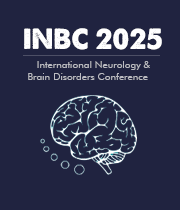Title : Endovascular thrombectomy in patients with acute ischemic stroke due to large-vessel occlusion
Abstract:
Acute ischemic stroke (AIS) caused by large-vessel occlusion (LVO) is a severe neurological emergency associated with high morbidity and mortality. Endovascular thrombectomy (EVT) has revolutionized the treatment of LVO strokes, offering significantly improved clinical outcomes compared to medical therapy alone. This presentation will provide a comprehensive overview of EVT in AIS patients, focusing on patient selection, procedural techniques, clinical evidence, and future directions.
First, we will discuss the critical importance of timely intervention, emphasizing the role of advanced imaging (CT angiography, MR angiography, and perfusion studies) in identifying eligible patients. Current guidelines recommend EVT for anterior circulation LVO (e.g., internal carotid artery, M1/M2 segments of the middle cerebral artery) within 6–24 hours of symptom onset, depending on perfusion mismatch criteria (DAWN, DEFUSE-3 trials).
Next, we will explore key technical aspects of EVT, including stent retrievers, aspiration catheters, and combined approaches. The presentation will highlight best practices in procedural workflow, such as anesthesia considerations (conscious sedation vs. general anesthesia), first-pass effect, and strategies to minimize complications (e.g., distal embolization, vessel dissection).
A major focus will be the landmark clinical trials (e.g., MR CLEAN, ESCAPE, REVASCAT) that established EVT as the gold standard for LVO strokes, demonstrating robust benefits in functional independence (modified Rankin Scale 0–2 at 90 days). We will also address challenges, such as the treatment of posterior circulation occlusions (BASICS, BEST trials) and the evolving role of EVT in extended time windows.
Finally, we will examine emerging advancements, including artificial intelligence for rapid LVO detection, adjunctive neuroprotective therapies, and ongoing research on EVT in milder strokes or distal occlusions. The presentation will conclude with a discussion on optimizing systems of care—from prehospital triage to post-thrombectomy management—to maximize patient outcomes.
This session aims to equip clinicians with evidence-based strategies to enhance EVT utilization, reduce disability, and improve survival in AIS patients.



